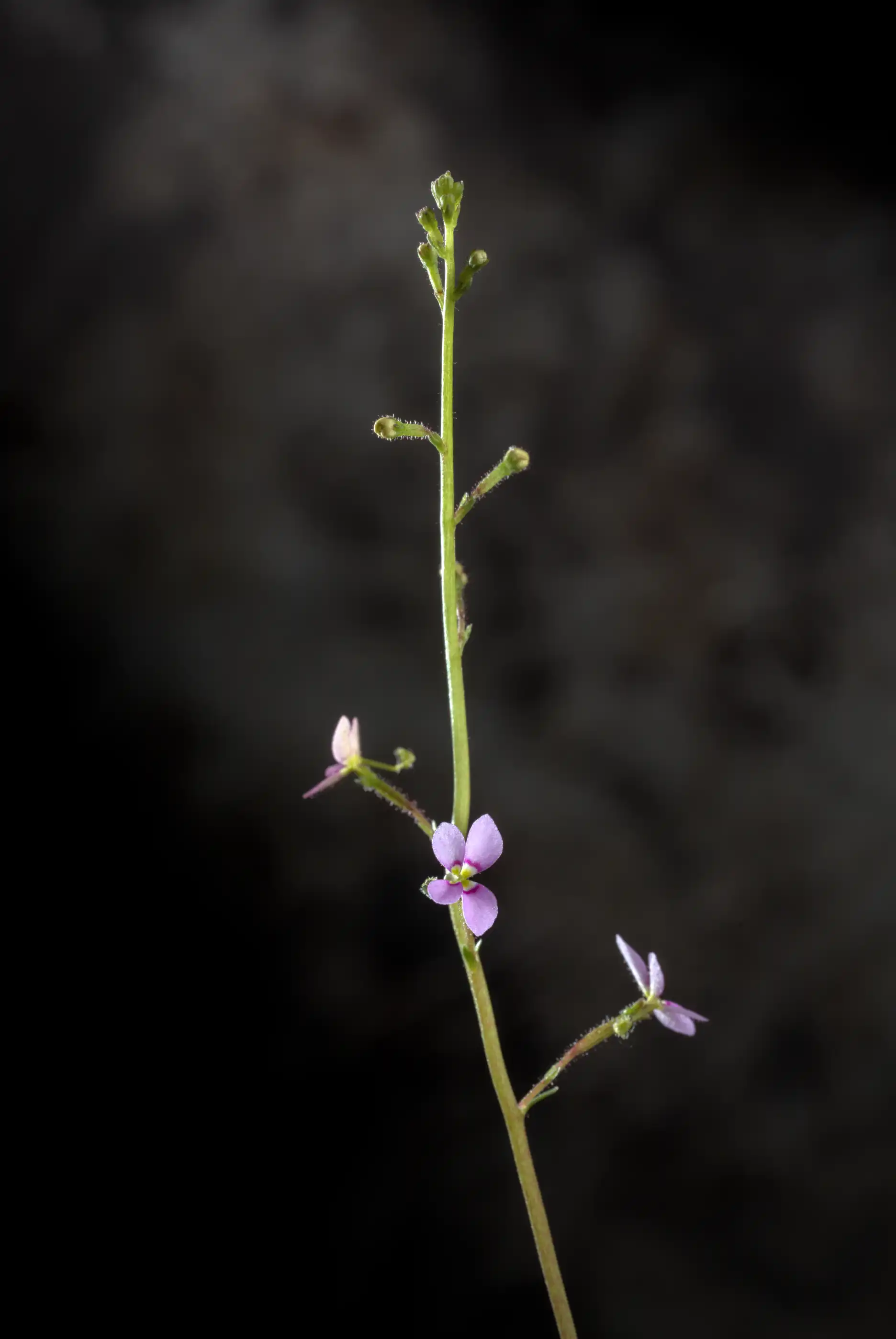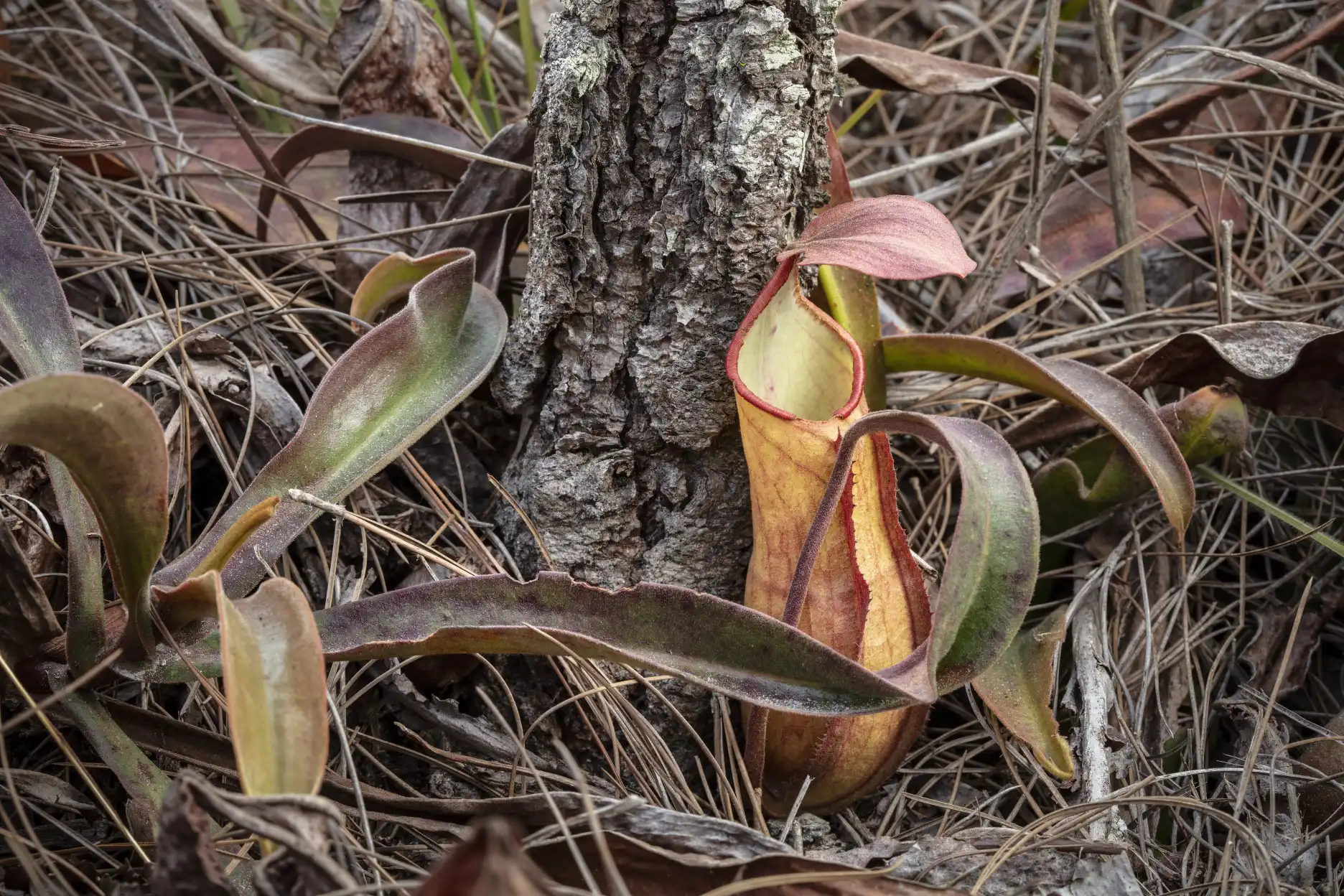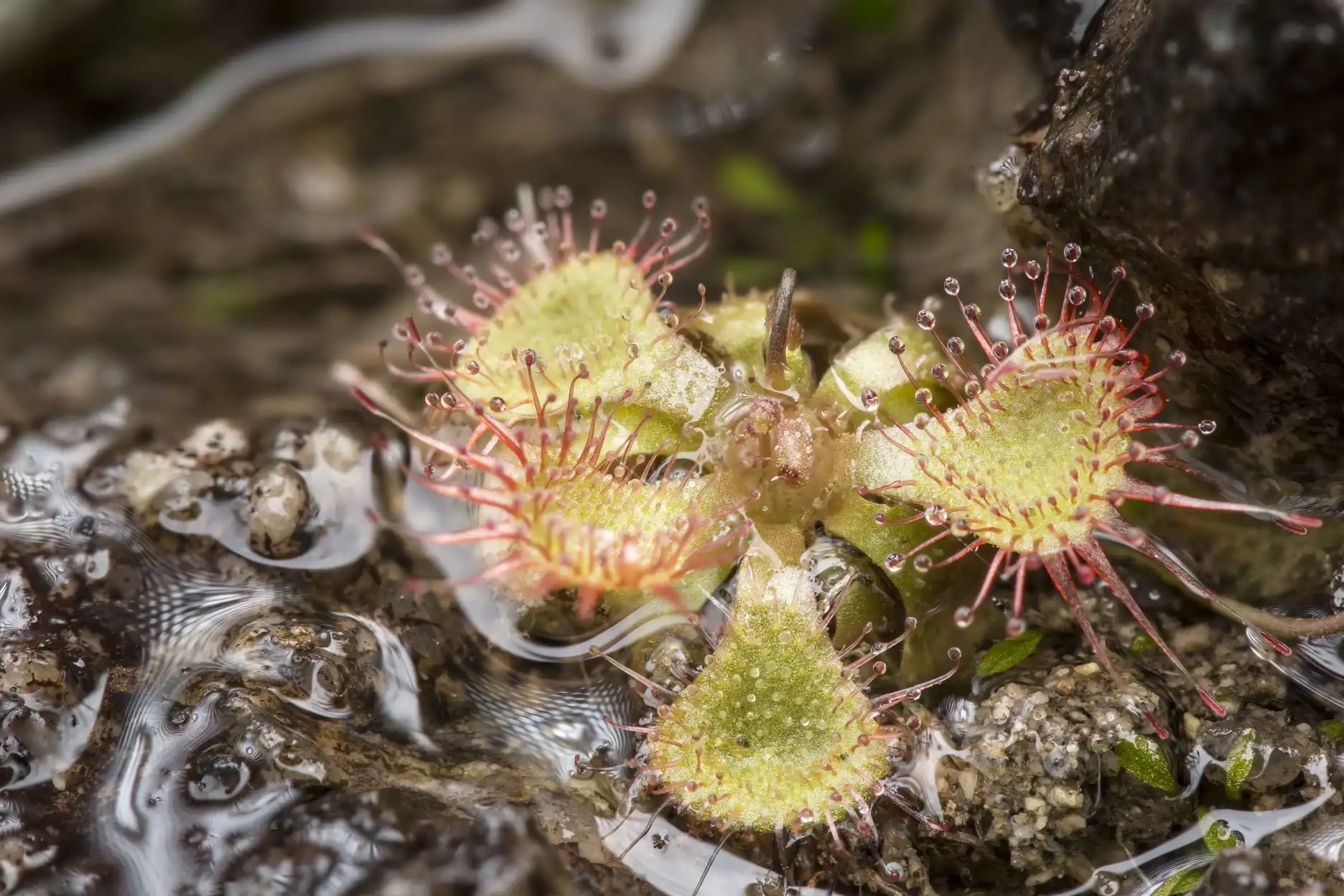Stylidium debile in Cultivation
Years ago, I grew Stylidium debile in California. After a long period of not growing any carnivorous plants, a friend gave me this division, which just began to flower.
Yes, yes, this is the most common Stylidium species in cultivation, and yes, it is exceedingly easy to grow. While that may reduce its cache with certain horticulturalists, it a pretty little plant. It features glandular carnivorous or protocarnivorous inflorescences, as well violently articulate anthers, as with all members of the genus.

While some have argued that the sticky trichomes that populate Stylidium flower scapes and buds are carnivorous (Darnowski 2017), others have concluded that members of the genus do not rely on captured prey as a source of nitrogen (Adamec, Matušíková, and Pavlovič 2021).

Either way, while the odd pollination distribution technique makes a certain amount of intuitive sense, the positioning of sticky traps so close to the plant’s reproductive bits are a curiosity, both in appearance and function.
References
Adamec, Lubomír, Ildikó Matušíková, and Andrej Pavlovič. 2021. “Recent Ecophysiological, Biochemical and Evolutional Insights into Plant Carnivory.” Annals of Botany 128 (3): 241–59. https://doi.org/10.1093/aob/mcab071.
Darnowski, Douglas W. 2017. “Further Evidence of Carnivory in Triggerplants (Stylidium Spp.; Stylidiaceae).” Carnivorous Plant Newsletter, March. https://doi.org/10.55360/cpn461.dd972.




